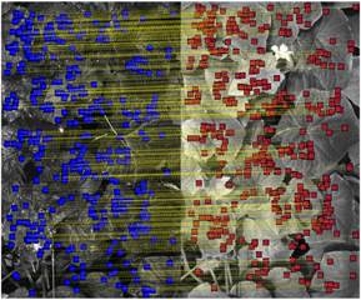Comparison between three registration methods in the case of non-georeferenced close range of multispectral images.
Author: Fernández C. I., Haddadi, A., Leblon, B., Wang, J., Wang, K.
Posted on Mar 9, 2021
Category: Publications , Research
Abstract: Cucumber powdery mildew, which is caused by Podosphaera xanthii, is a major disease that has a significant economic impact in cucumber greenhouse production. It is necessary to develop a non-invasive fast detection system for that disease. Such a system will use multispectral imagery acquired at a close range with a camera attached to a mobile cart’s mechanic extension. This study evaluated three image registration methods applied to non-georeferenced multispectral images acquired at close range over greenhouse cucumber plants with a MicaSense® RedEdge camera. The detection of matching points was performed using Speeded-Up Robust Features (SURF), and outliers matching points were removed using the M-estimator Sample Consensus (MSAC) algorithm. Three geometric transformations (affine, similarity, and projective) were considered in the registration process. For each transformation, we mapped the matching points of the blue, green, red, and NIR band images into the red-edge band space and computed the root mean square error (RMSE in pixel) to estimate the accuracy of each image registration. Our results achieved an RMSE of less than 1 pixel with the similarity and affine transformations and of less than 2 pixels with the projective transformation, whatever the band image. We determined that the best image registration method corresponded to the affine transformation because the RMSE is less than 1 pixel and the RMSEs have a Gaussian distribution for all of the bands, but the blue band.
Authors: Fernández C. I.1, Haddadi, A.2, Leblon, B.1, Wang, J.2, Wang, K.3
1. Faculty of Forestry and Environmental Management, University of New Brunswick, Fredericton, NB E3B 5A3, Canada
2. A&L Canada Laboratories, London, ON N5V 3P5, Canada
3. Department of Geography, University of Western Ontario, London, ON N6G 2V4, Canada
To read the entire article go to doi: 10.3390/rs13030396

